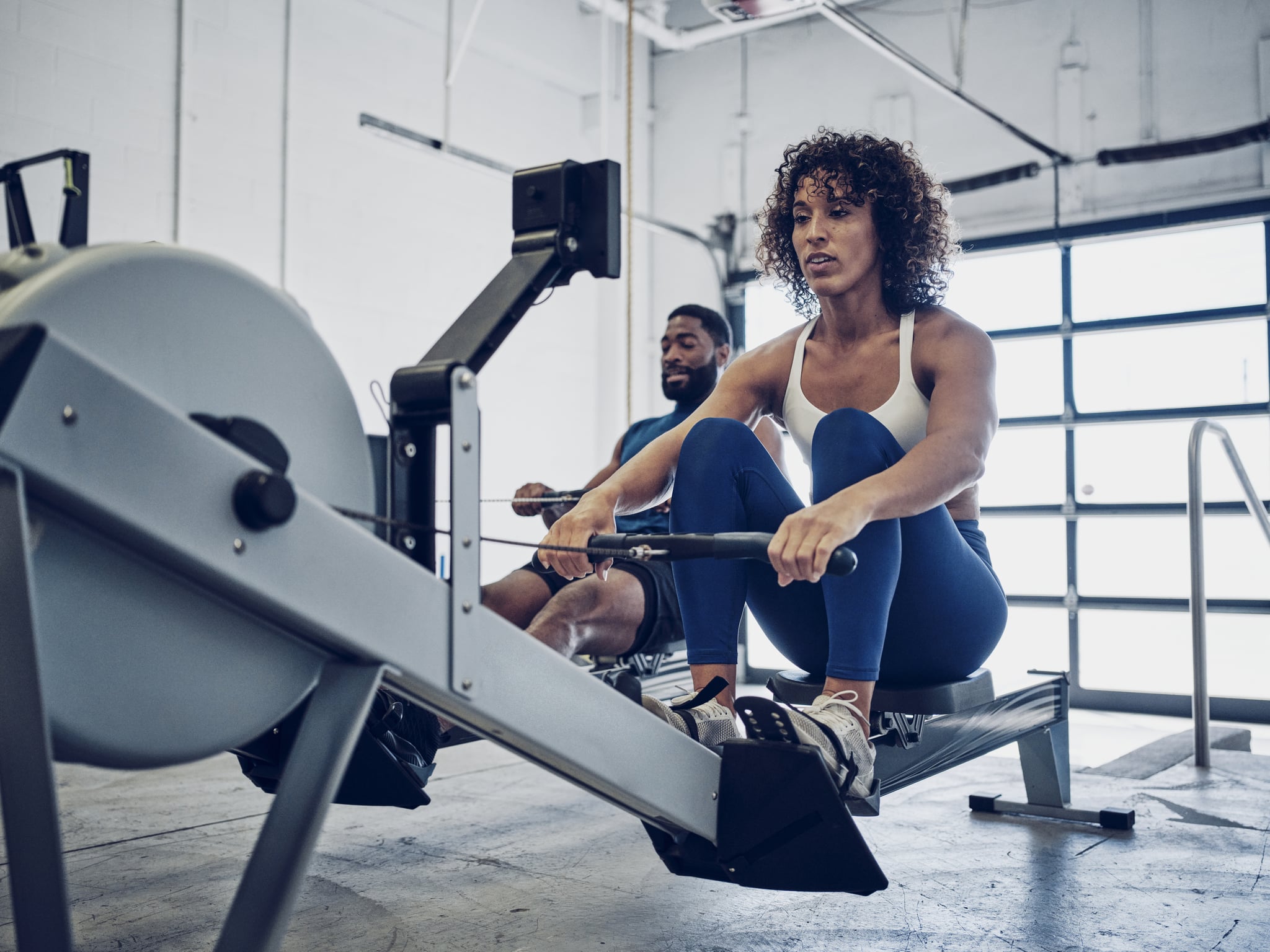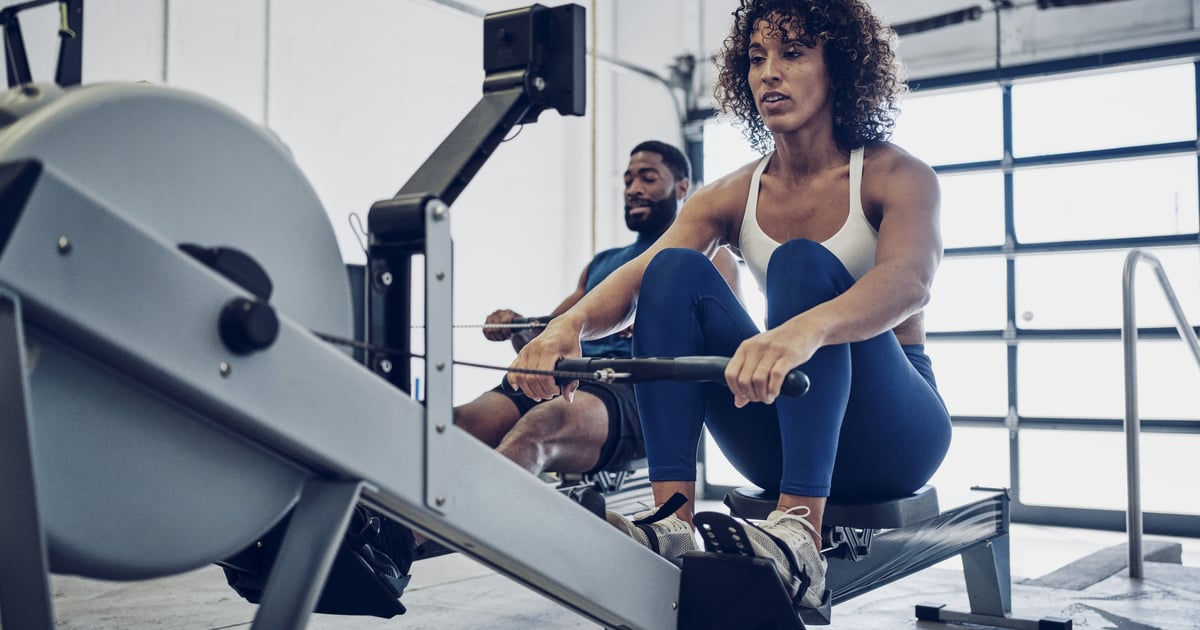
Rowing isn’t just for college athletes anymore — it’s a full-body workout growing in popularity across fitness studios, gyms, and homes throughout the country. Over the past 10 years, the number of people rowing indoors has grown by 20%. And that’s likely in part because the benefits of a rowing machine are substantial. Rowing is a full-body movement that works nearly all of your muscles, and the workout can be adapted to meet your fitness goals, whether you’re trying to build strength, increase your power, or improve your endurance. A few sessions with a rowing machine can pack a lot of punch!
But even if you’re heard all about the benefits of rowing, the rowing machine can seem intimidating if you’ve never rowed before. Proper form is crucial to reaping the benefits of rowing, and it can be hard to know when you’re performing the movement correctly. While many people fall into the trap of leading with their arms and shoulders, the majority of the power comes from your legs and core, which is crucial to know if you really want to strengthen all the muscles worked by a rowing machine. POPSUGAR tapped two fitness experts, including an indoor rowing gold medalist, to learn all about the benefits of a rowing, muscles worked by a rowing machine, and how to get the most out of your rowing workout.
Benefits of a Rowing Machine
There’s a reason so many fitness enthusiasts swear by the rowing machine. The benefits, in terms of what a rowing machine can do for your body are pretty amazing — from boosting your overall health to offering up a completely adaptable workout for all fitness levels and workout goals. Ahead, read 7 of the best benefits of a rowing machine.
Rowing is full-body workout.
“When done right, rowing can work nearly all of the muscles in your body, and help you train your body in different ways,” says John Steventon, Aviron coach and indoor rowing gold medalist. Quads, calves, hamstrings, glutes, upper and lower abs, back, shoulders, triceps, and biceps are all used to one degree or another, he says.
It can boost your overall health.
Since rowing incorporates a lot of elements of fitness into one activity, it’s a great way to boost your overall health and mood in a short period of time, says Grace Taylor, PT, DPT. “Even starting with a 10-15 minute rowing session five days a week can make a big difference.”
The rowing machine is completely adaptable to your fitness goals.
For a strength-focused workout, you can increase the machine’s resistance; or for an endurance workout, you can reduce the pace and resistance but increase the time. Or, you can adjust the pace and intensity throughout your workout for interval training, says Taylor. The machine is completely adaptable for your workout needs.
Rowing is great for people of all fitness levels.
Whether you’re new to working out or maybe have spent some time off, or you’re looking to challenge yourself — rowing offers a forum where people of all fitness levels can succeed. “You can build your base fitness and help your body to burn fat for fuel by taking it easy on long, slow rows, or you can go fast and hard to increase your VO2 max (your body’s ability to deliver and use oxygen) and build speed and power,” says Steventon. Rowing is also a low-impact workout, making it more accessible to people on all ends of the fitness spectrum.
It’s also great for cross-training.
If you’re looking for a cross-training choice that offer low-impact strength training and cardio conditioning, rowing is perfect, Taylor says. It gives you the benefits of a high-level training activity without putting high levels of stress on your joints.
Rowing can improve your posture.
Strengthening your back and abdominal muscles in the the way that rowing does helps maintain upright posture, and reduces stress and strain to your cervical, thoracic, and lumbar spine, Taylor says.
Rowing can help you build lean muscle and loose weight.
Because rowing recruits so many of your muscles, it requires a lot of energy, so it’s a great workout to turn to if you’re trying to burn fat through a calorie deficit, adds Steventon. Your muscles will also become fitter and leaner as you row more, as they’ll get used to pumping to help move the machine.
What Muscles Does a Rowing Machine Work?
Steventon jokes that it’s faster to mention the muscles that rowing doesn’t work, as about 85% of your muscles are used during a rowing session. Again, quads, calves, hamstrings, glutes, upper and lower abs, back, shoulders, triceps, and biceps are all used during a rowing machine workout.
However, both Steventon and Taylor caution that those benefits are dependent on using proper technique. “A common mistake is to create all force and power from your arms, when most of the effort is produced from the legs and core,” says Taylor. “The stroke really starts by pushing with the legs,” adds Steventon. “If you don’t push with the legs, you’ll see that 85% drop closer to 45%.”
How to Row with Proper Form
To make sure you’re getting the full muscle activation, Steventon advises on proper form:
- Start your stroke at the back of the machine, with your legs and back straight. Hold the handle in front of you with relaxed shoulders. Then, tilt forward over your hips, but be careful not to round your lower back. Bend your knees and roll forward until you’re at the front of the machine and your knees are bent.
- While maintaining your forward tilt and straight arms, engage your core and push your feet into the machine. Think about pushing the machine away from you, rather than pulling the handle back, says Steventon.
- Keep your arms straight and forward tilt until your legs are halfway down the machine. Only then should you swing your back to a backwards tilt, and pull your arms up to sternum height. Squeeze your shoulder blades together as you pull back.
- Finally, smoothly release the handle from your body, tilt forward again, bend your knees, and repeat!
What Happens If You Row Everyday?
“Provided you vary the intensity, so you aren’t rowing as hard as you can every day, you’ll improve your overall fitness, and particularly strength in your legs and back,” says Steventon. Like any form of exercise, it’s important to change up your rowing workout to allow muscles time to recover, and make sure you don’t burn out.
“Rowing every single day can eventually wear you out if you don’t take a rest day,” Steventon cautions. “But as long as you pay attention to whether your body is fatigued, and you vary the intensity of your workouts, you will get fitter, faster and stronger by rowing.”
Steventon recommends that out of three rowing sessions, two should be low-intensity fitness-building rows, similar to the effort of walking up an endless flight of stairs. These sessions can be longer in duration (around 30 minutes), and at a slower pace and stroke rate. The third row would then be a fast, high intensity interval workout, like 30 seconds sprinting and 30 seconds of rest, repeated 10-20 times.
What Are the Results of a 30-Minute Rowing Workout?
While it depends on the intensity that you’re going for, both a fast and slow-paced rowing workout have lots of benefits.
“A low intensity, low stroke rate, slow row will help your heart to be more efficient at pumping blood around your body, which increases your cardiovascular fitness,” says Steventon. “A faster workout, like alternating between eight minutes of work at a high stroke rate and speed with two minutes of rest in between, will take just as long, but will be geared more towards improving your VO2max.”
That’s the beauty of using a rowing machine: what you get out of it is totally up to you and your fitness goals. Get ready to row in the rewards.

nzCuptrqlTJW